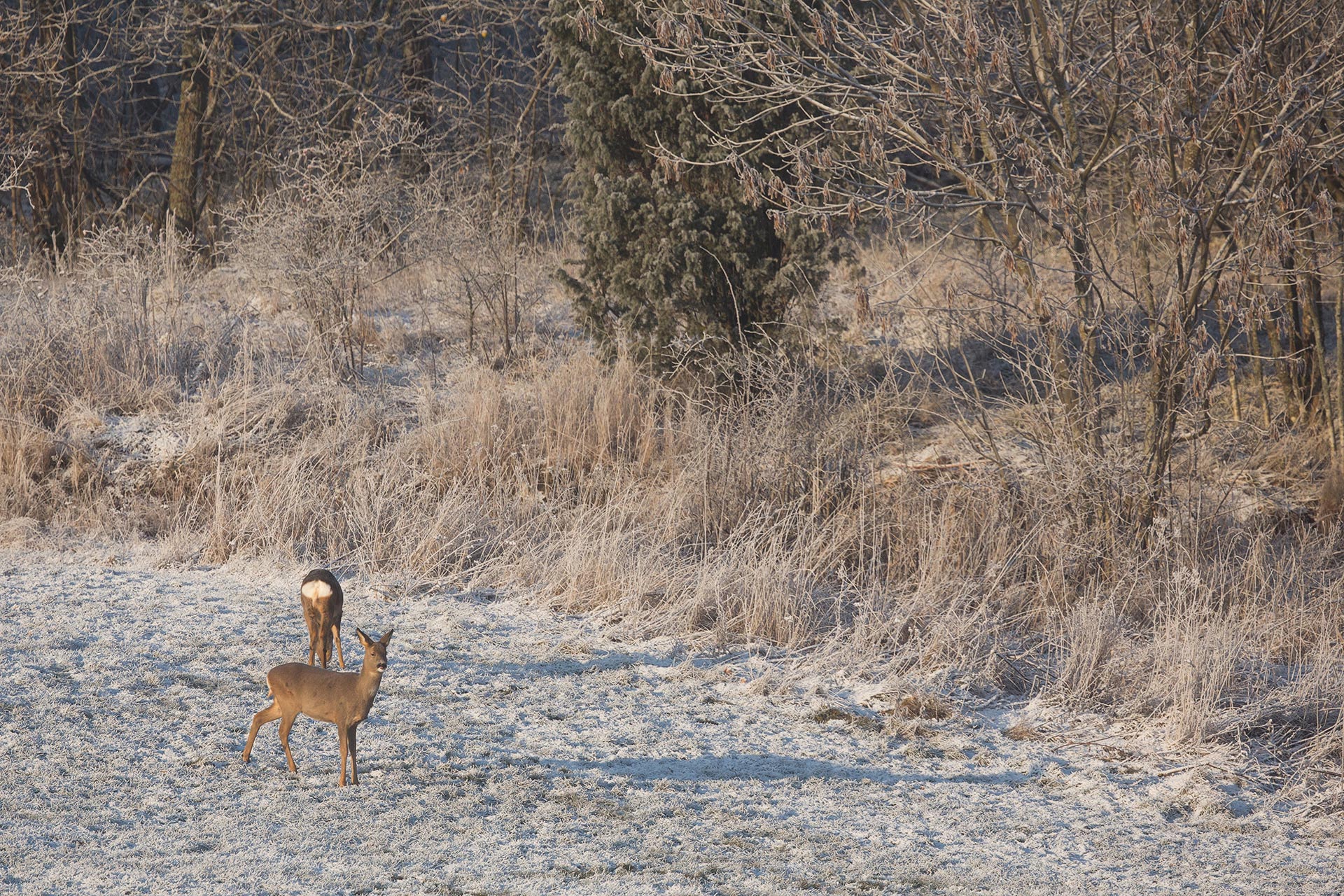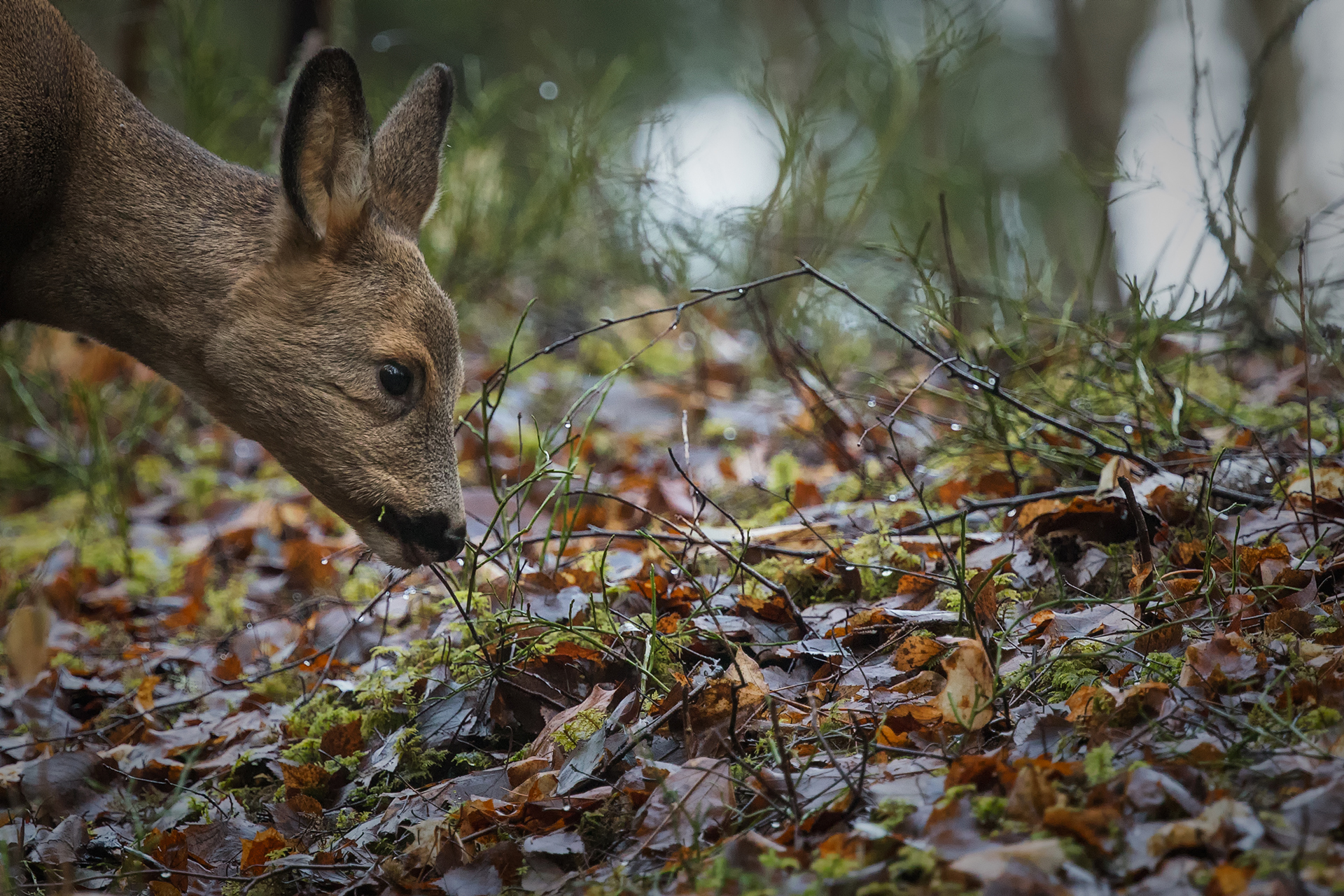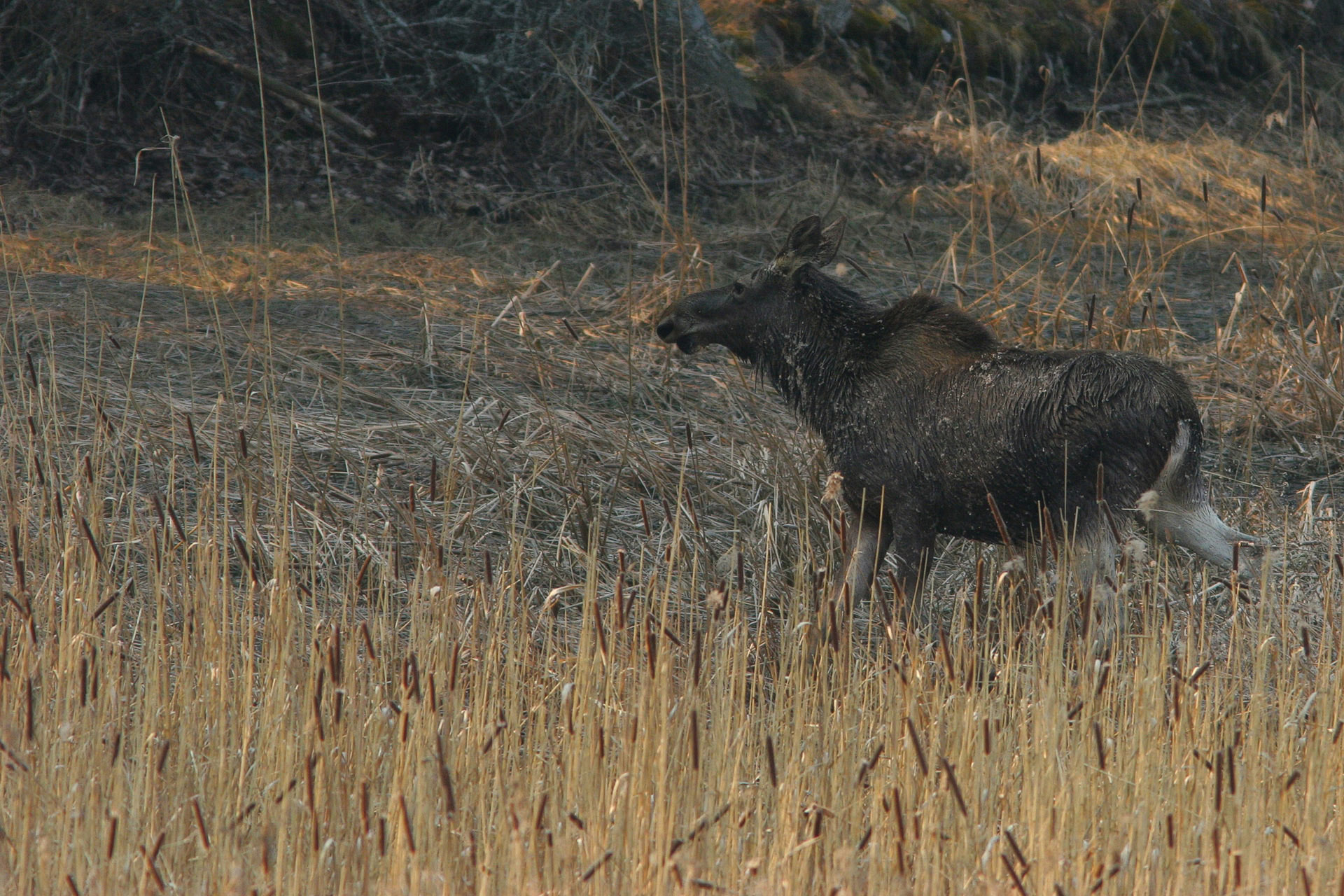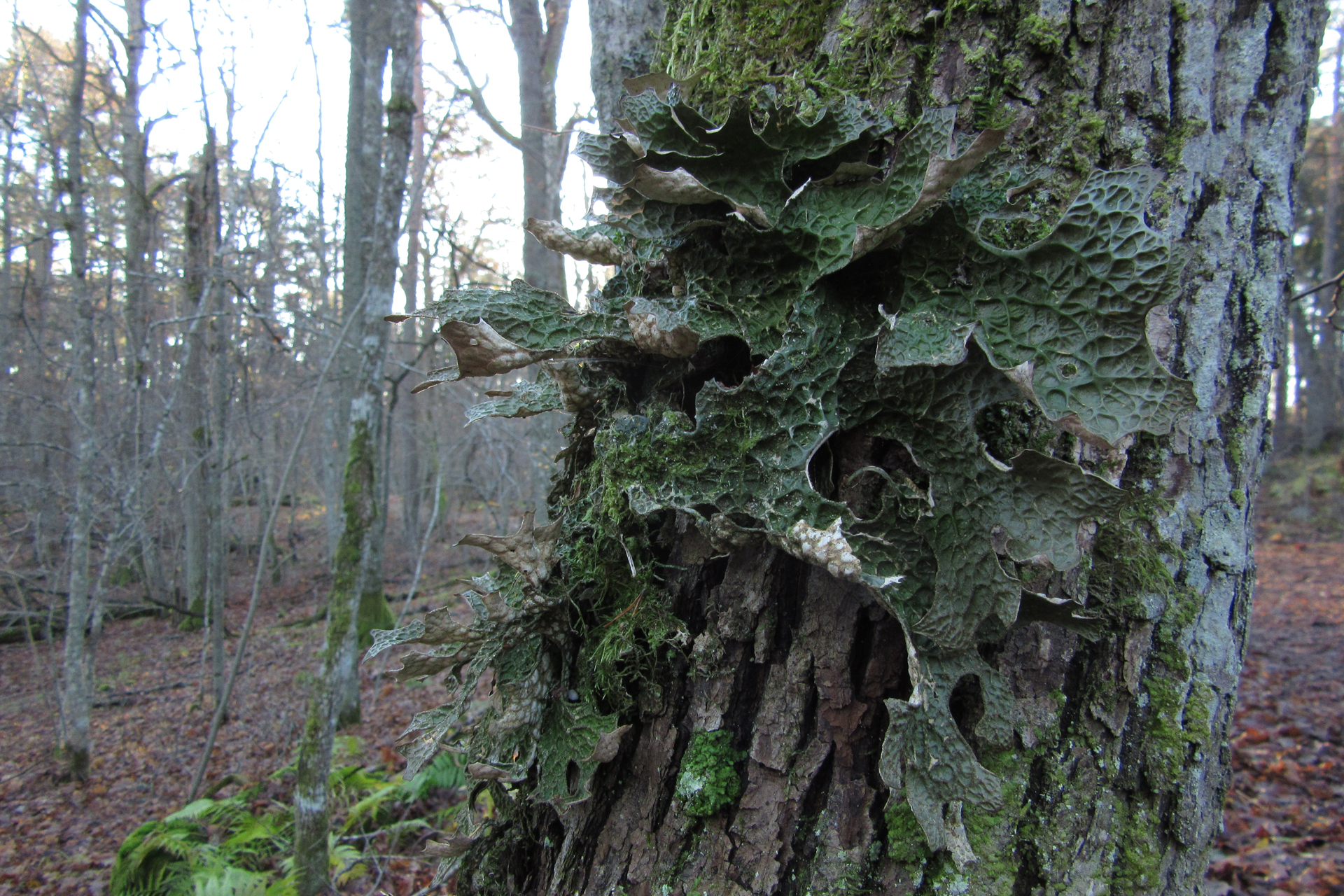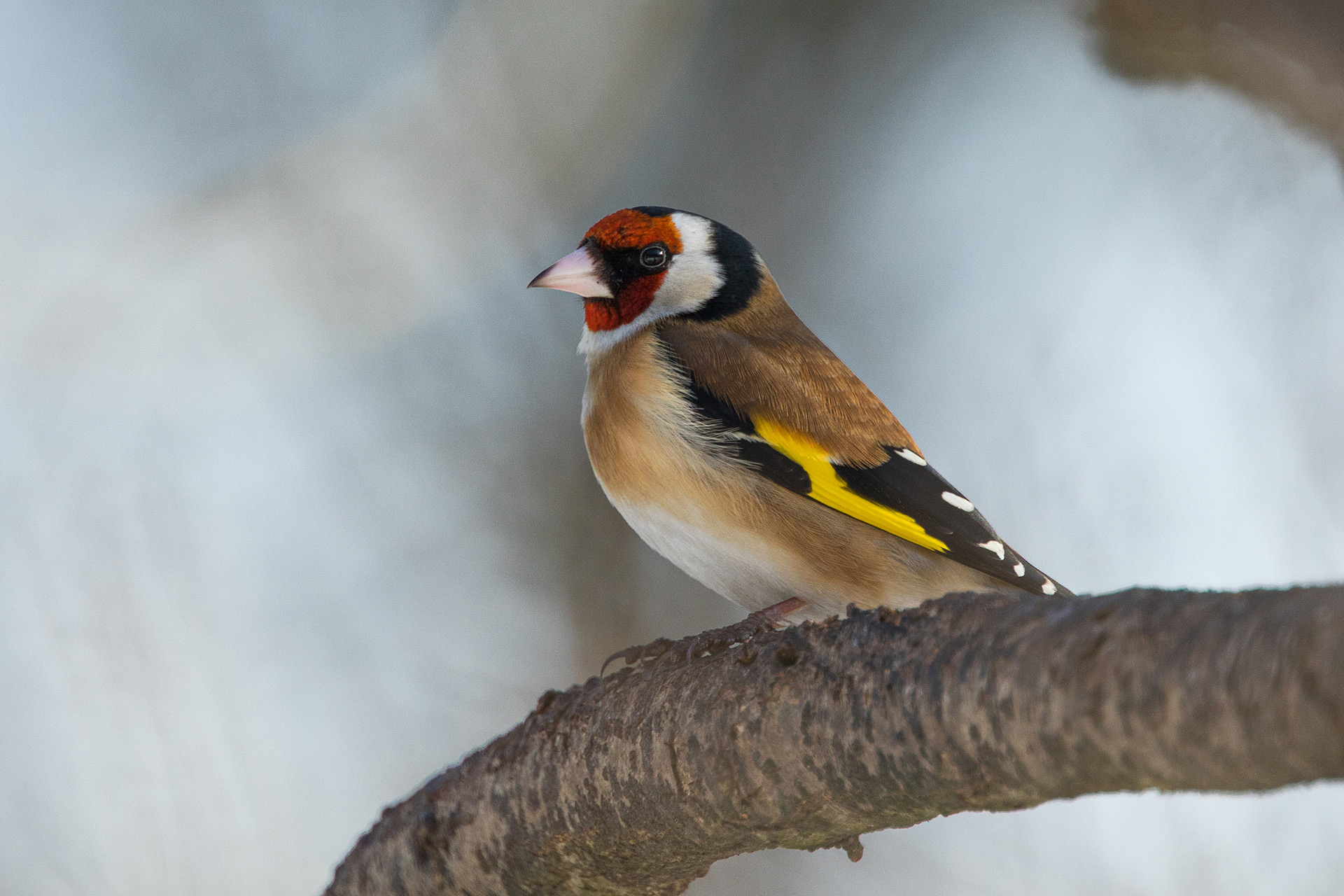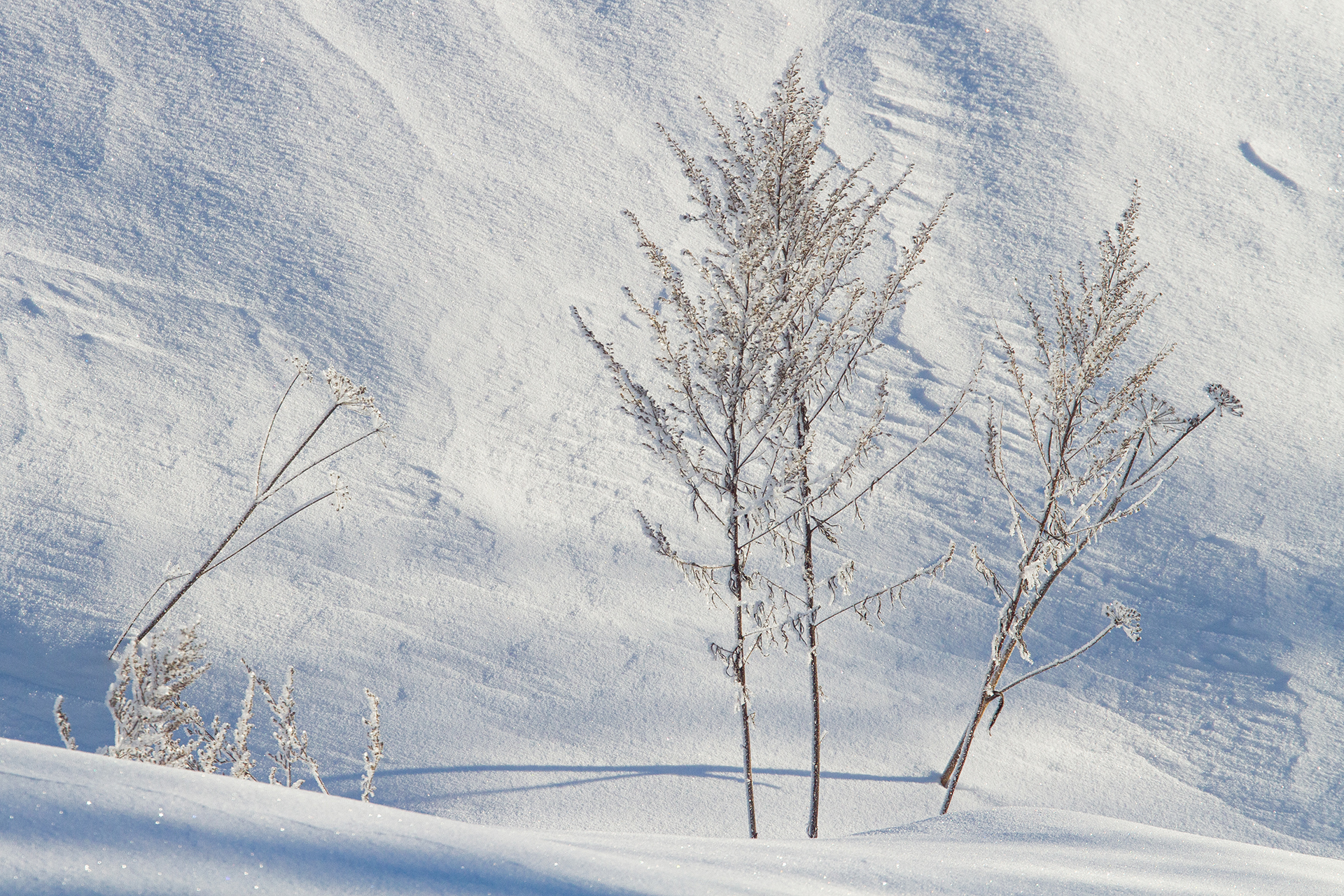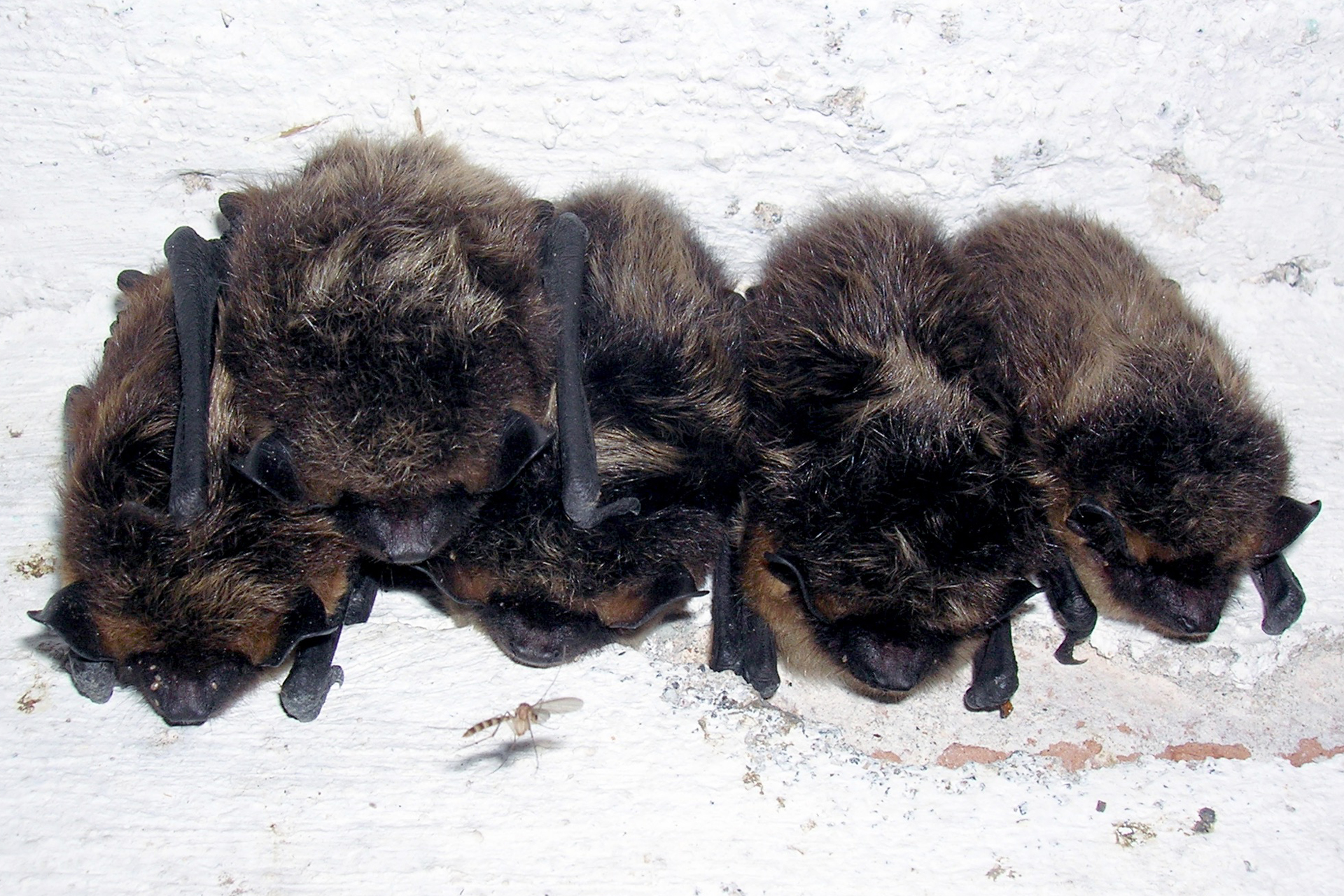Native and new deer
You can often see roe deer in the fields of Ruissalo, at the edges of the island’s forests and leaping across roads. The roe deer can be identified by its slight build, small size (fully grown adults weigh only 20–30 kg) and white, almost tail-less rump. Their hoofmarks are also small, measuring only five centimetres. The roe deer’s vocalisations are surprisingly hoarse barks.
The roe deer is native to Finland, but the white-tailed deer was brought over from America in the 1930s. Since then, this alien species has quickly spread across southern Finland. The largest populations can be found in the regions of Häme, Uusimaa and Southwest Finland; in northern and eastern Finland, the species’ expansion is hindered by the thickness of the winter snow cover. The white-tailed deer’s hoofmarks are notably larger than those of the roe deer, measuring 7–12 cm across.
Ruissalo is estimated to be home to hundreds of roe deer. The reason why the roe deer population has grown this large is the absence of their natural predators on the island, in addition to which deciduous forests mottled by cultivated open areas are their favoured habitats. However, a deer population of this size also poses a threat to the sustainability of the local English oak population and the island’s other valuable plant species, which is why the local deer population is controlled by way of hunting. The numbers of white-tailed deer found on the island are considerably lower. There have also been occasional sightings of elk recorded on Ruissalo.
